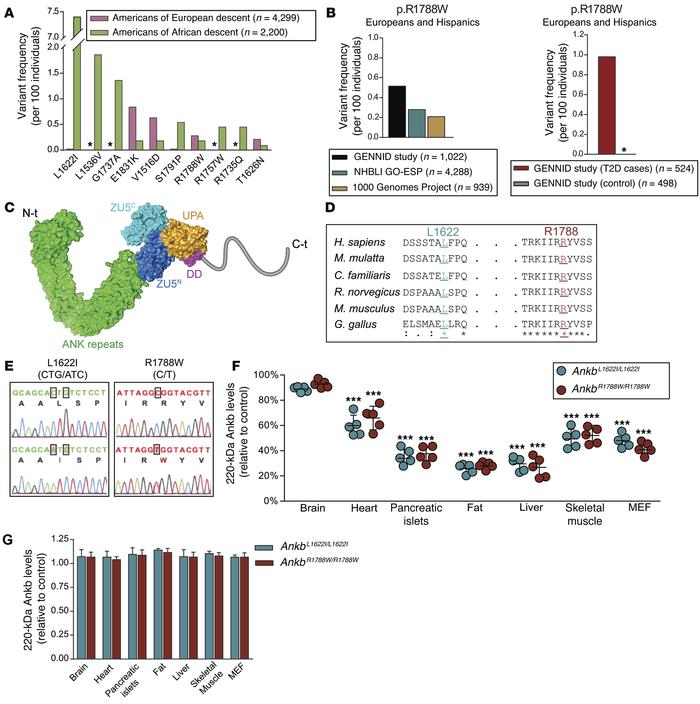Citation Information: J Clin Invest. 2015;125(8):3087-3102. https://doi.org/10.1172/JCI81317.
Abstract
Rare functional variants of ankyrin-B have been implicated in human disease, including hereditary cardiac arrhythmia and type 2 diabetes (T2D). Here, we developed murine models to evaluate the metabolic consequences of these alterations in vivo. Specifically, we generated knockin mice that express either the human ankyrin-B variant R1788W, which is present in 0.3% of North Americans of mixed European descent and is associated with T2D, or L1622I, which is present in 7.5% of African Americans. Young
Authors
Damaris N. Lorenzo, Jane A. Healy, Janell Hostettler, Jonathan Davis, Jiayu Yang, Chao Wang, Hans Ewald Hohmeier, Mingjie Zhang, Vann Bennett
Figure 1
Human AnkB variants cause tissue-specific AnkB reduction.



Copyright © 2025 American Society for Clinical Investigation
ISSN: 0021-9738 (print), 1558-8238 (online)

